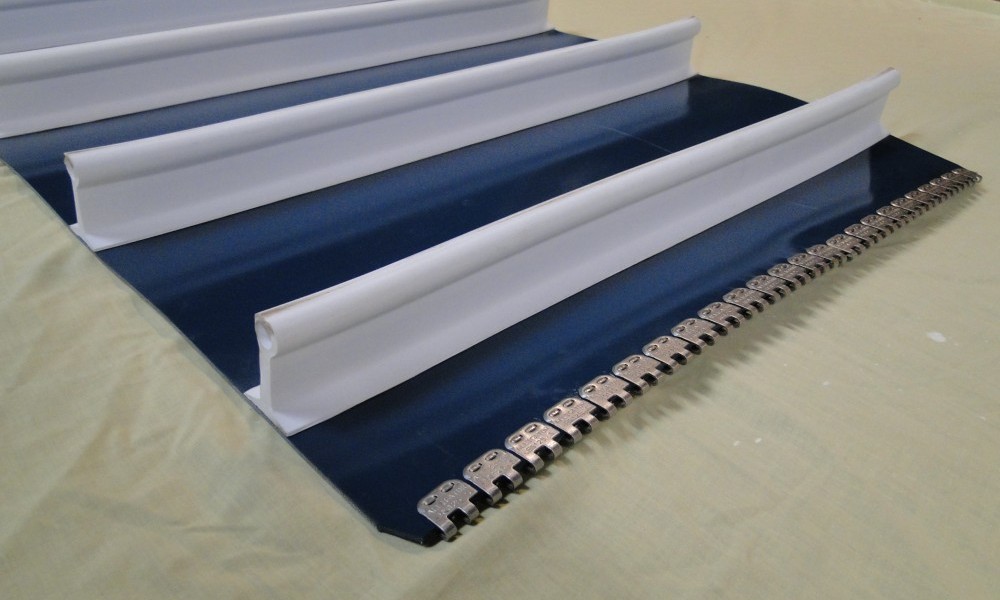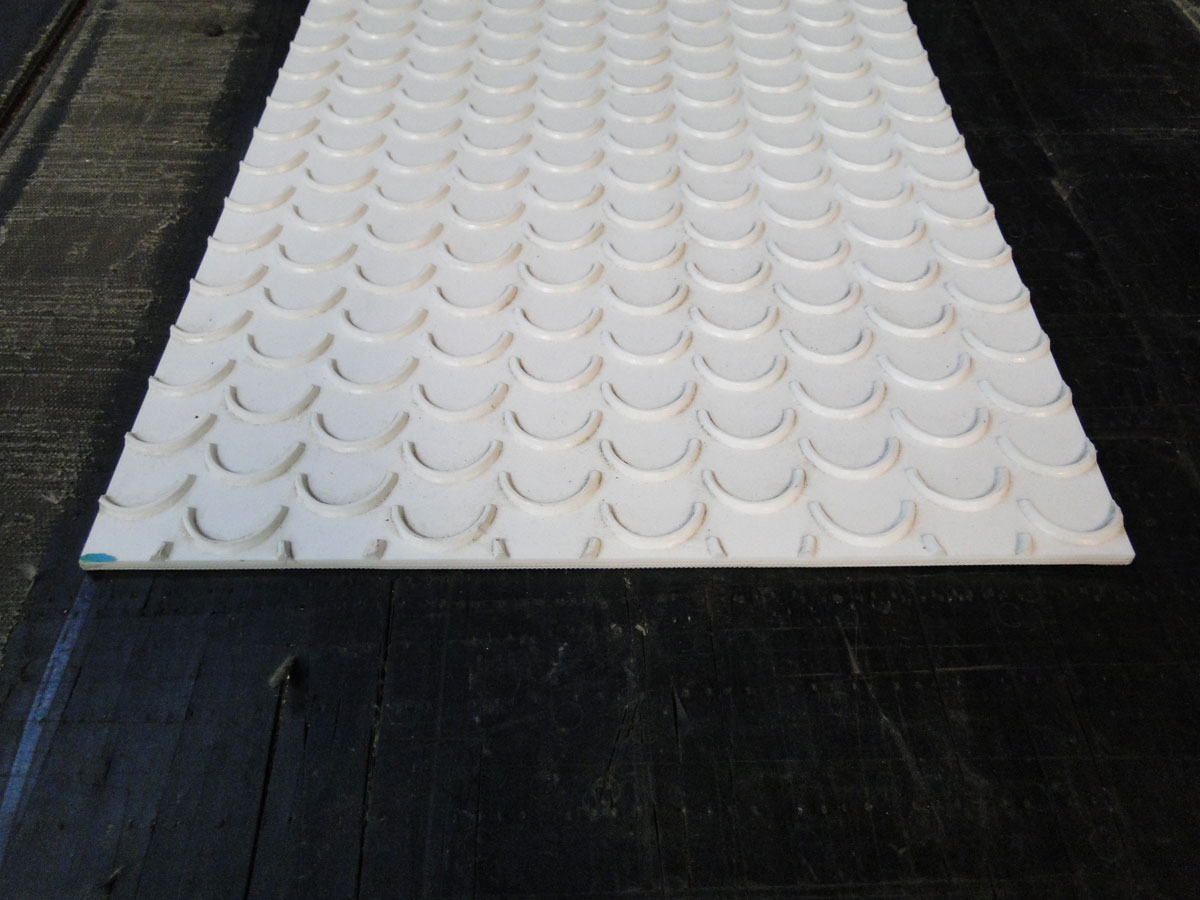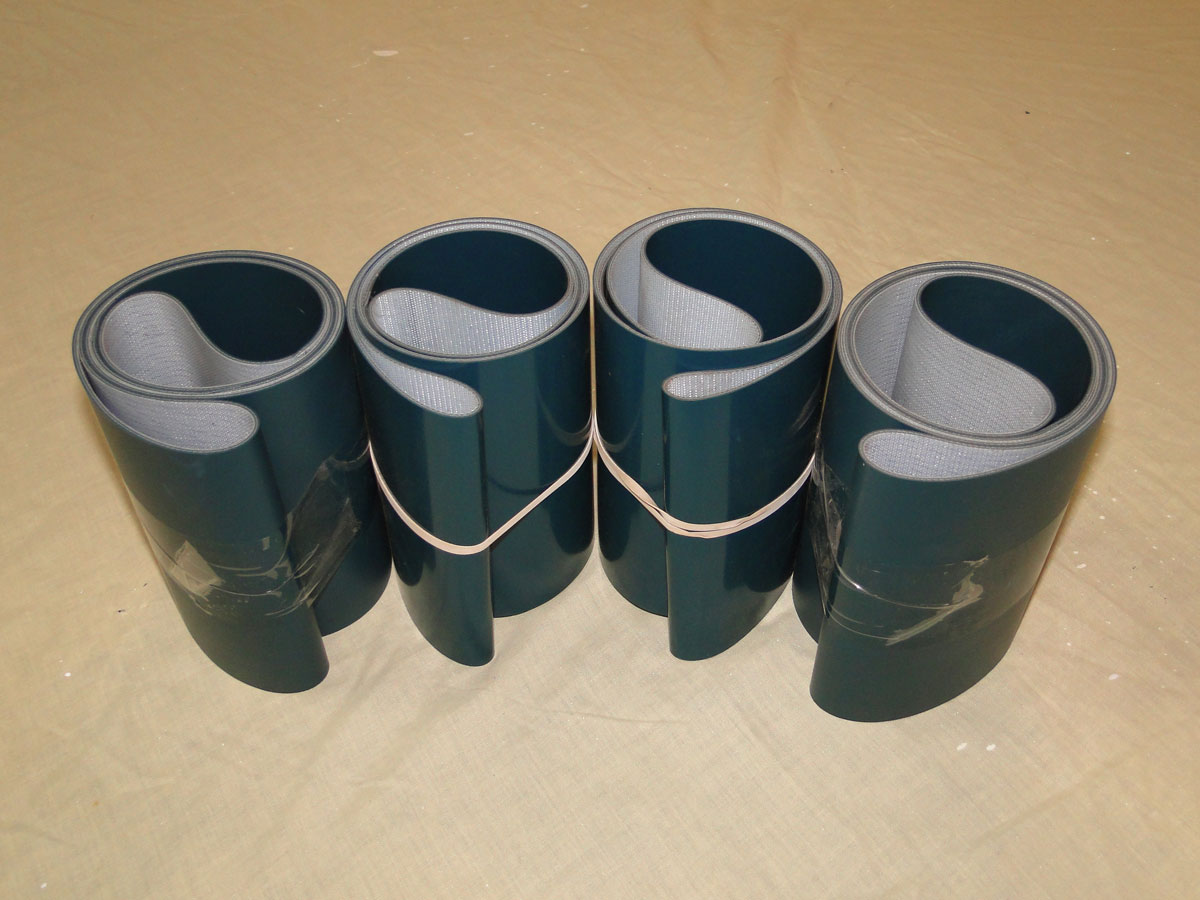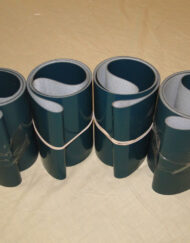Ag Accessories offer a range of belts suitable for Silage Feedout Carts, Round Bale Silage Wrappers and Fertilizer Spreaders along with Conveyor belting to the local Fruit and Vegetable Industry.
Today there are different types of conveyor belts that have been created for conveying different kinds of material available in PVC and Rubber materials.
PVC belts provide excellent acid and chemical resistance. A strong interwoven carcass of 100% polyester prevents ply delamination, allowing belt to wrap smaller puller diameters. Carcass strength can provide a higher belt strength with a thinner belt gauge. PVC is available in a variety of ply strengths, colors, compounds, profiles and cover styles to meet your exact requirements.
Rubber belts with heavy top covers provide excellent oil and residue resistance. A heavy top cover can cushion the product as it falls on to the conveyor, and sometimes grip the product better than a more rigid top cover. Once again these rubber belts are available in a variety of ply strengths, profiles and cover styles to meet your exact requirements.
We can attach profiles to your belt including Cleats, Tracking Ribs and Sidewalls/Wave Wall depending on your particular requirements.
All our PVC and rubber General Purpose belting is able to be supplied endless, or with fasteners fitted for easier installation. Silage wrapper belts are supplied in an endless format to ensure there are no lacings to potentially catch the silage wrap plastic. In other conveyor type applications, Alligator Style Stainless Steel lacings are the desired lacing in the industry, with 3 sizes available (62, 125 and 187) suiting most ply ratings and thicknesses of belting, or a Clipper style lacing can be fitted if required.
ORDERING YOUR SILAGE FEEDOUT CART BELT OR CONVEYOR BELT
When ordering your belt there are several important measurements to be noted to ensure the best option for the new belt such as –
• What is the overall belt width that will fit in the tray of the conveyor? (not necessarily the width of the old worn belt)
• What is the overall ideal desired length of the belt? (with the adjusting roller in the middle of the adjustment)
• What ply rating does the belt need to be? A good hint is to look at the existing lacings to see if they have tell tale identifying marks on them that can help identify the belt thickness.
• Does the belt have or require cleats? If required, how high, how often, and are they inset from the edges to allow for skirting rubber?)
• Is there a tracking guide on the underside? (Either in the middle or the edges)
• What size rollers does the belt travel around on each end? (This is to ensure that that the belt and the lacings are suitable to flex around the roller)





